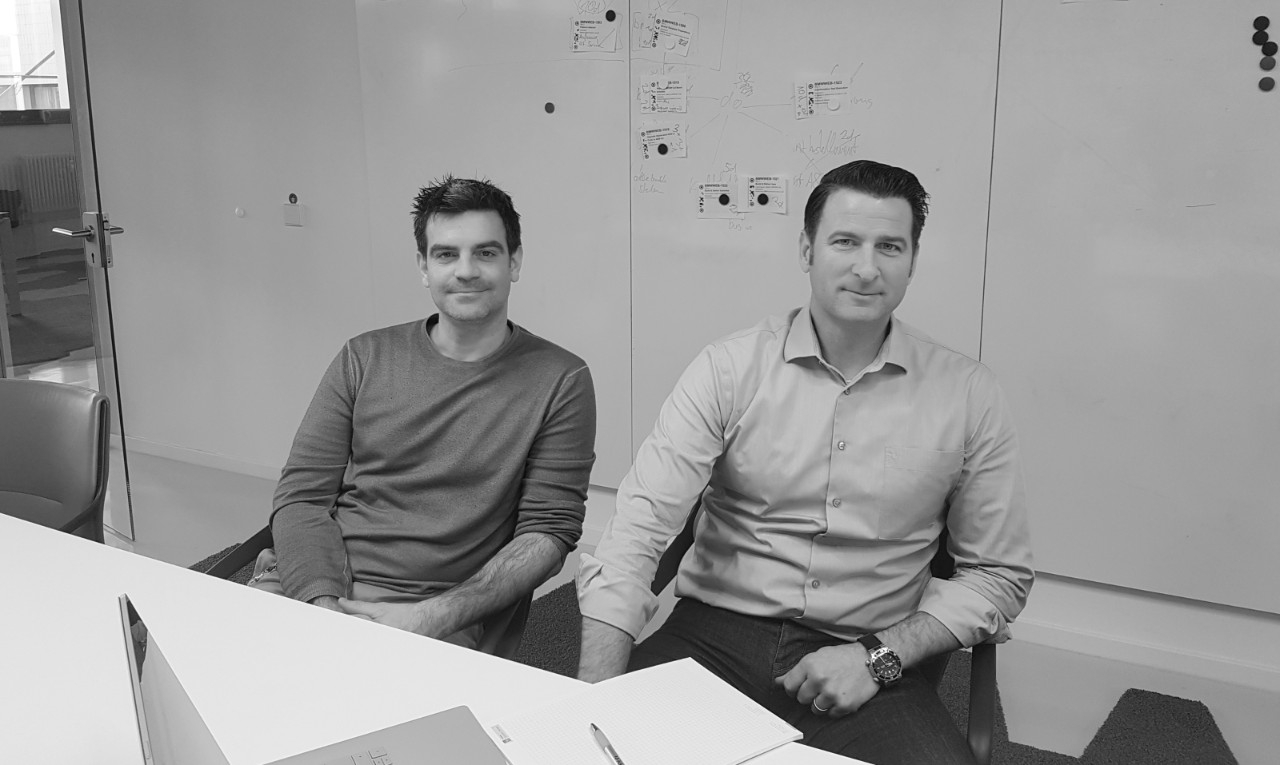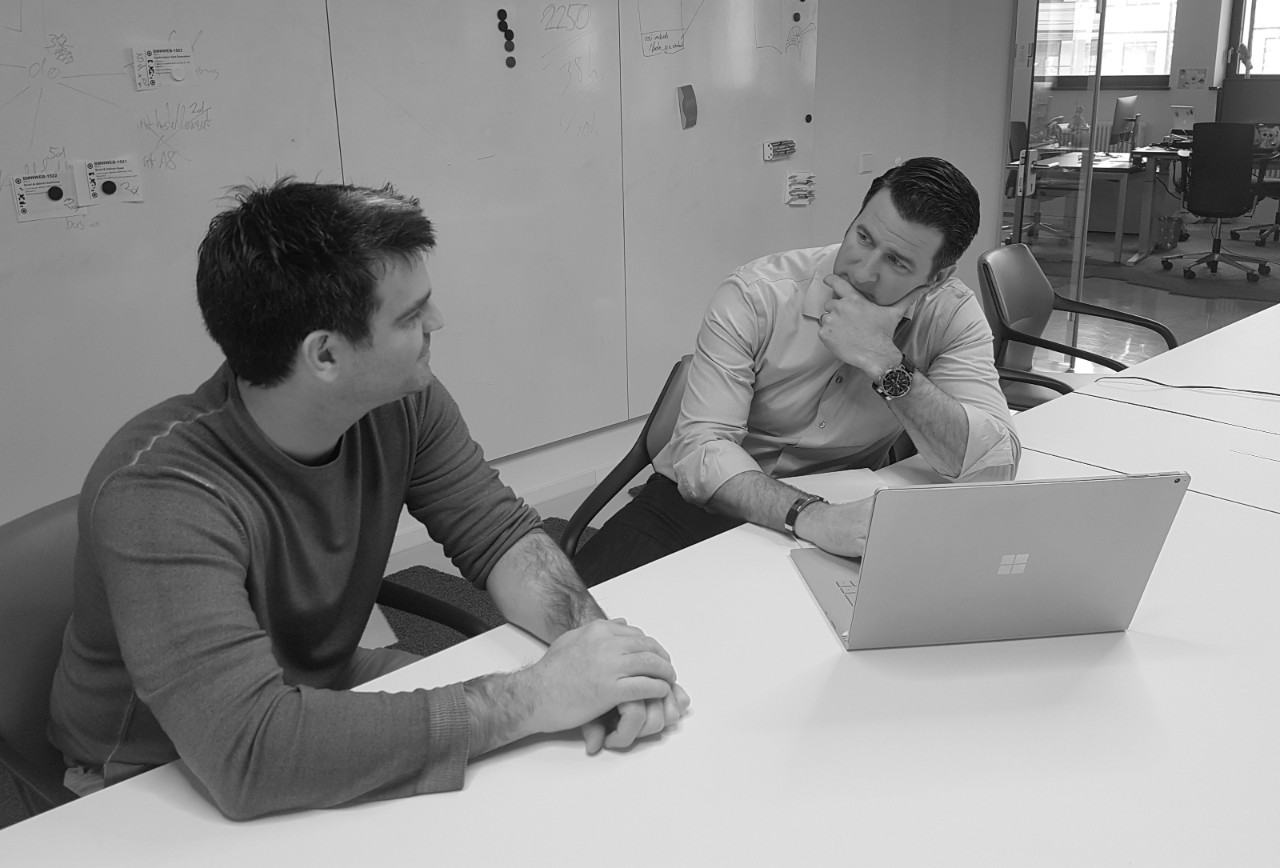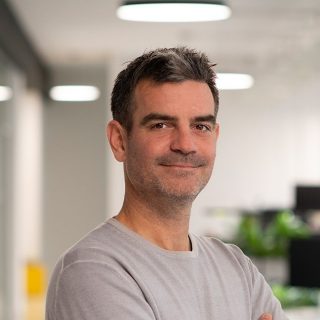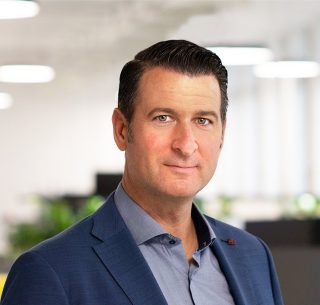Martin Brösamle (MB): Tobias, when does your work as a PM begin?
Tobias Golinger (TG): My activities already start during the presales phase. In this phase, in coordination with the sales and development team, I carry out estimates based on customer requirements. This ensures that we incorporate our experience from past projects into the estimates. This is important because the optimal composition of the project team depends on the often very different project requirements and the teams can therefore differ from project to project. It also happens that we do not exactly understand the requirements or objectives of an inquiry, which may have different reasons. Then we specifically ask until we get a coherent picture. In addition, during this phase we already check which know-how and which colleagues are needed in the project and "reserve" these at an early stage.
MB: How does a project start respectively what is the typical Project Life Cycle?
TG: Years ago, we defined a PM process that goes through various steps and is continuously improved. After receiving the customer order, we start with the project planning as soon as possible. First, in consultation with our colleagues, we name a Tech Lead for the project, define the team and explain the project goal in a kick-off. Ideally, the kick-off should take place at the customer's site and, if possible, with all project participants. Before work on the project begins, I also make sure that all the information required for the project is available. This includes contact details of all project participants, access to all required systems, etc.
MB: What happens next?
TG: Once the business and technical requirements have been clarified, the development cycle can begin. If not, there will be a requirements phase at the beginning in which technical and functional requirements are clarified. This is followed by the UX / Design phase, which forms the foundation for the subsequent implementation. Upon successful completion the project ends with the so-called "Closing", in which we carry out a Lessons Learned within the team and partly also with the customer and afterwards finish the project. During the Lessons Learned, we note down the experiences and knowledge which can improved as well as the ones which need no improvement, so that these can be taken into account for future projects. This is what we call Continuous Improvement.
MB: How do you work?
TG: Basically, we work very transparently and thus ensure that the customer has an insight into the progress of the project at all times. Depending on the size of the project, all available information is documented in Confluence. We use Jira for task management. Coordination with customers takes place either through regular telephone calls (Jour-Fixe, Daily) and/or directly via Confluence and Jira. During a project, the customer receives time sheets and status reports at regular intervals.
MB: What do you need to keep in mind during the course of a project?
TG: This can be summed up in 3 words: Time, quality, budget.
Regardless of whether it's a T&M or a fixed-price project: We want to guarantee the best possible quality at the lowest possible cost. To ensure this, open and prompt communication with each other and with the customer is indispensable. I am a friend of open and clear communication and always try to address and clarify all issues immediately. We have learned that a telephone call or personal meeting with the customer is much more effective than trying to clarify facts in writing. However, proper documentation must still be ensured.
In my opinion, mutual trust is essential for a successful project.
From a PM perspective, there is one important difference between a fixed price and a T&M project. For a fixed-price project, I have to make sure that we remain within the scope of the commissioned assignment and meet the customer's requirements and resulting acceptance criteria. In case of new requirements, I point out to the customer that these can have an influence on the duration of the project, the project costs and the acceptance criteria. Customers are often unaware that even small changes can have a big impact.
MB: What is a typical project size for eggs?
TG: This cannot be generalized. In addition to several larger and long-term projects (also in the double-digit FTE range), we also carry out smaller consulting services with on-call quotas of 10 - 30 MDs per year.
MB: What problems can occur in a project?
TG: Problems can be of different nature: technical, factual, interpersonal. They all have one thing in common: for every problem, there is a cause and usually a solution. From my experience, I can say that most problems arise when messages are interpreted differently between sender and receiver. Therefore, I advise everyone to rather pick up the phone once too often. With fixed-price projects, there may well be different opinions regarding in-scope and out-of-scope. This must then be discussed and clarified with the customer.
MB: What was your most important finding in the last three years?
TG: No two projects are the same and you learn from day to day. As a PM, you have to master your tools of the trade and also have a high degree of flexibility. And the most important thing at the end: communication.



